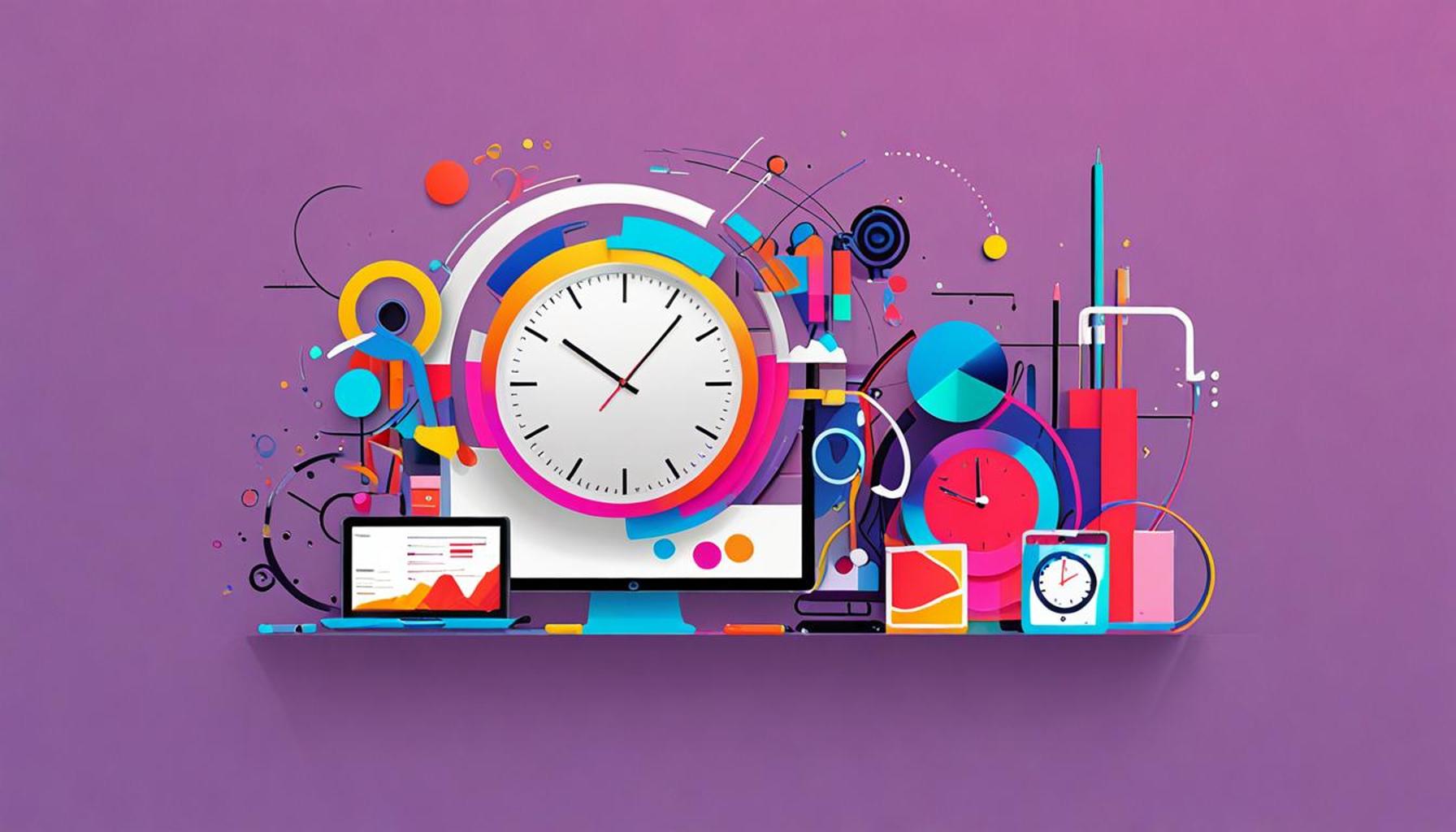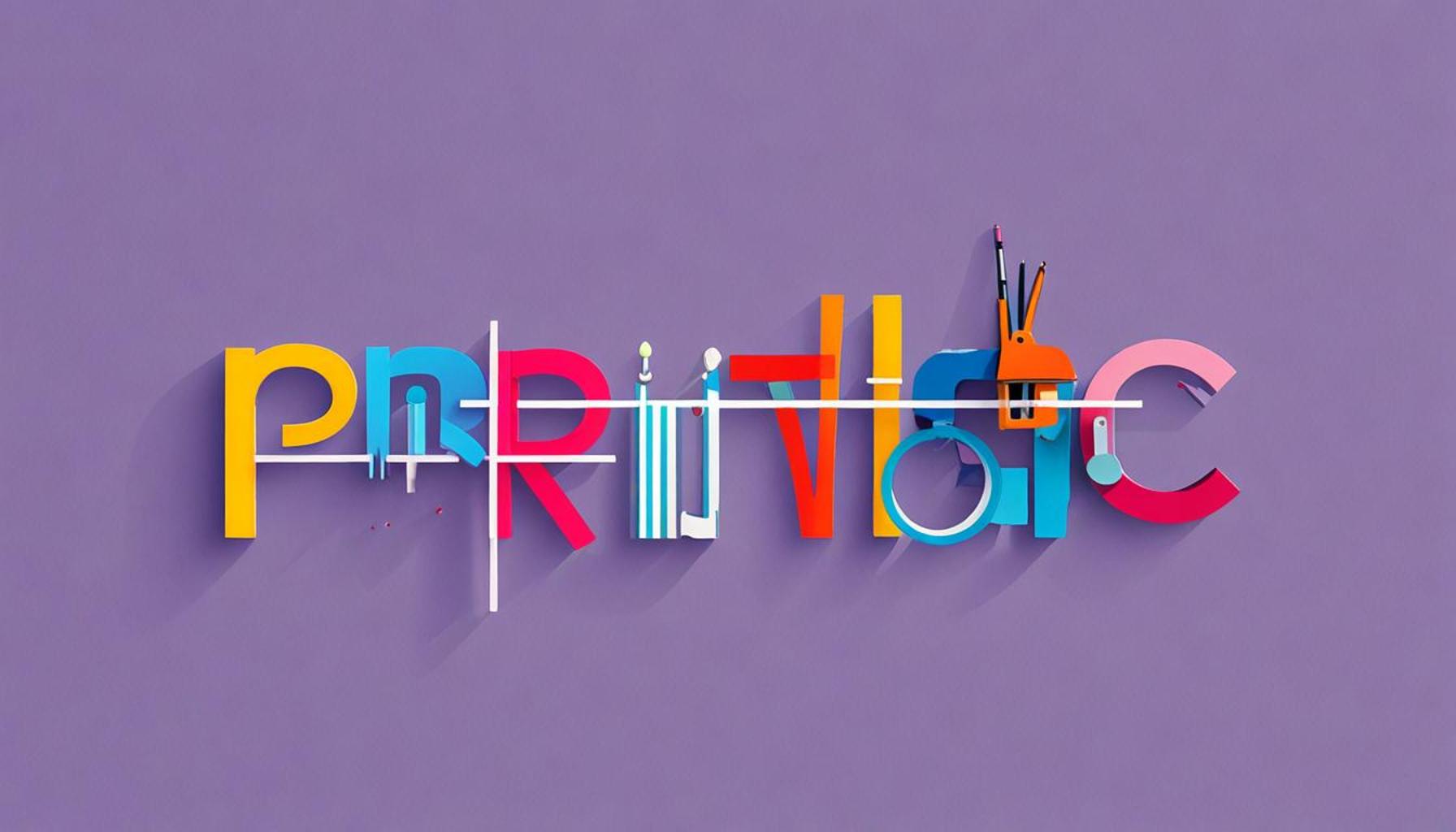Digital Minimalism: Optimizing Your Time in the Information Age

The Reality of Information Overload
Today’s society is intertwined with technology, creating an environment where we are constantly bombarded with information. Each day, individuals in the United States receive an estimated 120 emails and are exposed to thousands of social media updates and online articles. This relentless flow of data can overwhelm the mind, making it difficult to focus on tasks at hand. As a result, many experience decreased productivity and increased stress levels, impacting both their personal and professional lives.
The Rise of Digital Minimalism
In response to these challenges, digital minimalism has emerged as a crucial strategy for managing one’s digital life. This philosophy advocates for intentional engagement with technology and encourages individuals to cut back on unnecessary distractions. By doing so, practitioners of digital minimalism can cultivate a healthier relationship with their devices and the digital content they consume.
Benefits of Embracing Digital Minimalism
The advantages of adopting a digital minimalist approach are manifold:
- Enhanced Mental Clarity: By reducing distractions, individuals can achieve better focus and clarity of thought, allowing for deeper engagement with tasks.
- Improved Work-Life Balance: Setting stricter boundaries on technology usage can help individuals create necessary separation between work and personal time, fostering rejuvenation and reducing burnout.
- More Meaningful Social Interactions: Prioritizing face-to-face communication over digital conversations can lead to stronger relationships and a deeper sense of community.
- Reinvestment in Personal Growth: The time saved by minimizing less productive online activities can be redirected towards hobbies, learning, or fitness, positively impacting overall well-being.
Practical Applications of Digital Minimalism
Adopting digital minimalism does not require an extreme lifestyle overhaul; instead, it encourages gradual changes. Start by identifying which digital interactions are genuinely beneficial. Consider implementing designated times to check emails or social media, reducing the frequency of notifications, or decluttering digital devices by removing apps that offer little value. For example, a recent survey found that nearly 70% of smartphone users are willing to delete apps that do not enhance their daily lives, indicating a growing interest in prioritizing quality over quantity.
A small yet effective strategy includes creating a weekly technology-free day, allowing for reflection and recharging. By setting clear priorities and engaging meaningfully with technology, individuals can foster a more balanced digital experience, leading to improved mental well-being and more fulfilling lives.
Conclusion
As we navigate an increasingly complex digital landscape, embracing the principles of digital minimalism can serve as a beacon of clarity and purpose. Are you prepared to delve deeper into this transformative philosophy and explore how it can enrich your daily life?
DISCOVER MORE: Click here to learn how to turn challenges into opportunities
Understanding Digital Overload
As we delve deeper into the information age, the concept of digital overload becomes vividly clear. With technology seamlessly woven into the fabric of our daily existence, we face an incessant barrage of notifications, messages, and media. A recent study revealed that the average American spends over 11 hours per day engaging with digital screens. This not only fragments our attention but also takes a toll on our cognitive abilities and emotional health, leading to a heightened sense of anxiety and distraction.
The Psychology Behind Digital Minimalism
Digital minimalism is grounded in the understanding of how excessive digital engagement can skew our priorities and diminish our quality of life. At its core, this philosophy promotes a conscious selection of digital interactions, advocating for the removal of superfluous tech engagements in favor of more meaningful experiences. By focusing on quality over quantity, individuals can reclaim their time and attention, leading to improved productivity and a more satisfying daily life.
Recognizing Redundant Digital Appointments
Identifying which digital interactions serve a purpose in our lives is the first step toward embracing digital minimalism. Here are key areas to evaluate when assessing your digital commitments:
- Social Media Presence: Consider the number of social media platforms you actively engage with. Are they enriching your life, or are they a source of comparison and stress?
- Email Management: Evaluate how often you check your email throughout the day. Is constant access to your inbox hindering your focus on essential tasks?
- App Utility: Review your smartphone and tablet apps. Do you use all of them frequently, or are there several that gather digital dust?
- News Consumption: In an age where news is constant and often sensationalized, ask yourself if your daily news intake is beneficial for your mental wellbeing.
Creating a Designed Digital Experience
Establishing a more intentional approach to technology can be liberating. Taking small, actionable steps can lead to significant improvements in your well-being. For instance, try limiting your social media usage to a specific time slot each day, allowing yourself the freedom to engage without the endless scroll dominating your hours. Similarly, batching your email responses to just twice a day can transform your workflow and allow for deeper focus on more complex projects.
Additionally, consider the impact of digital detox periods. Committing to a short tech-free zone, even if just for an hour each day, can give your mind the space it needs to rejuvenate. This allows you to engage in activities that nourish creativity and personal connections, moving you closer to embracing the core principles of digital minimalism.
Exploring the Core Principles of Digital Minimalism
Digital minimalism is more than a mere trend; it is a lifestyle philosophy that encourages users to take control of their digital lives. By focusing on purpose and intentionality, digital minimalists can effectively enhance their focus, leading to more profound engagement in both work and personal life. Reducing digital clutter is crucial as it helps eliminate distractions, freeing up mental space for creativity and productivity. When individuals curate their digital experiences, they learn to differentiate between useful content and mere noise, empowering them to make better use of their time.
To successfully adopt this lifestyle, one must engage in the practice of regularly auditing digital activities. Analyzing which apps, websites, and devices contribute positively to one’s life can reveal surprising insights. Additionally, digital minimalism advocates often suggest implementing time limits on certain activities and prioritizing face-to-face connections over digital communications. This emphasis on real-world interactions is vital for maintaining meaningful relationships in the digital age.
Benefits of Digital Minimalism
| Category | Key Features |
|---|---|
| Focus and Productivity | Elimination of distractions enables deeper work |
| Enhanced Quality of Life | More time for personal interests and relationships |
Embracing digital minimalism can yield benefits that go beyond just reducing screen time. Individuals often report improved mental health, as they feel less overwhelmed by constant notifications and the pressure to stay connected. This shift encourages a culture of mindfulness, where being present in each moment is prioritized above the relentless pursuit of information. In turn, this multiplier effect on well-being and productivity invites readers to reexamine their own multitasking habits, promoting a life governed by intentionality rather than distraction.
DIVE DEEPER: Click here to discover more about creating a minimalist agenda
Implementing Digital Minimalism in Daily Life
Adopting the principles of digital minimalism involves more than merely reducing screen time; it necessitates a profound re-evaluation of how we engage with technology. By deliberately crafting a balanced digital experience, we can optimize our time and mitigate the distractions that pervade our lives. Below are several advanced strategies to help you streamline your digital usage.
Establishing Boundaries
Creating clear boundaries around technology use is essential to managing digital distractions. Implementing screen time limits on devices can help regulate your daily exposure. For example, both iOS and Android devices offer built-in features that allow users to set daily limits on app usage. By taking advantage of these tools, you can cultivate a healthy relationship with your devices, enabling you to prioritize tasks that require focused attention.
Moreover, consider instituting device-free rituals. Set aside specific hours during the day—such as family meals or an hour before bed—when no devices are permitted. This practice not only fosters healthier personal relationships but also allows mental clarity to flourish during moments of quiet reflection.
Decluttering Your Digital Space
Just as physical space can become cluttered, our digital landscapes can also be overwhelmed with excess information. A worthy exercise is to undertake a digital declutter. Start by unsubscribing from newsletters, podcasts, and channels that do not genuinely add value to your life. A survey by the Pew Research Center highlights that nearly 70% of Americans feel overwhelmed by the sheer volume of emails they receive, illustrating the necessity of reducing incoming information.
Additionally, it’s important to curate social media feeds that inspire you. Unfollow accounts that don’t resonate with your values or personal goals. Instead, follow individuals and organizations that foster positivity, creativity, and knowledge. By constructing a curated digital environment, you allow only meaningful information to enter your life, which can lead to more enriching online experiences.
Mindful Consumption of Digital Content
The way we consume information also deserves careful consideration. Instead of passively scrolling through content, embrace a more intentional approach. Set specific goals for digital engagement, whether it’s reading a book, listening to a thought-provoking podcast, or watching in-depth documentaries that expand your understanding of the world.
Another compelling strategy is to adopt a single-tasking mindset. Focus on one task at a time rather than multitasking. Research by the American Psychological Association indicates that multitasking can decrease productivity by as much as 40%. By concentrating on one task, whether it be drafting an email, engaging in a conversation, or working on a project, you are likely to achieve better outcomes and enjoy a greater sense of accomplishment.
The Role of Technology in Supporting Minimalism
Interestingly, technology can also serve as an ally in your quest for digital minimalism. Numerous apps help you track and limit your screen time, such as Forest and Moment. These tools encourage a more mindful relationship with your devices by actively helping you stay present in the moment. Additionally, utilizing tools like task managers can help streamline your responsibilities, consolidating commitments in one place and minimizing the chaos of competing digital demands.
Ultimately, embracing digital minimalism is about fostering a lifestyle that prioritizes significance over abundance, turning away from distractions that degrade mental wellbeing. Finding the balance between connectivity and solitude can lead you not just to a more productive existence but to a deeper connection with the world around you.
DISCOVER MORE: Click here for tips on intentional living
Conclusion: Embracing a Purposeful Digital Life
In navigating the complexities of the Information Age, adopting a digital minimalism mindset can profoundly transform the way we experience technology. As we’ve discussed, it is not merely about reducing screen time; rather, it encompasses a holistic approach to defining our digital interactions, establishing boundaries, and curating our digital spaces. By engaging in strategies such as digital decluttering and modeling mindful consumption, we reclaim control over our online environments and, subsequently, our lives.
The findings of behavioral research underscore the transformative impact of intentional technology use on mental health and productivity. By setting clear boundaries and fostering device-free rituals, individuals can nurture both their personal connections and their mental clarity, two essential elements for a fulfilling life. Moreover, the role of technology as an ally, through apps and tools that support digital moderation, adds another layer of empowerment in this pursuit.
Ultimately, embracing digital minimalism allows us to prioritize what truly matters amid the noise of modern life. The challenge lies in redefining our relationship with technology to align with our values and aspirations, fostering a lifestyle where time is optimized, creativity flourishes, and well-being is safeguarded. As we move forward in this information-saturated era, the practice of digital minimalism may well serve as a guiding framework for anyone seeking to cultivate a more purposeful, enriched existence in a world increasingly driven by digital demands.


